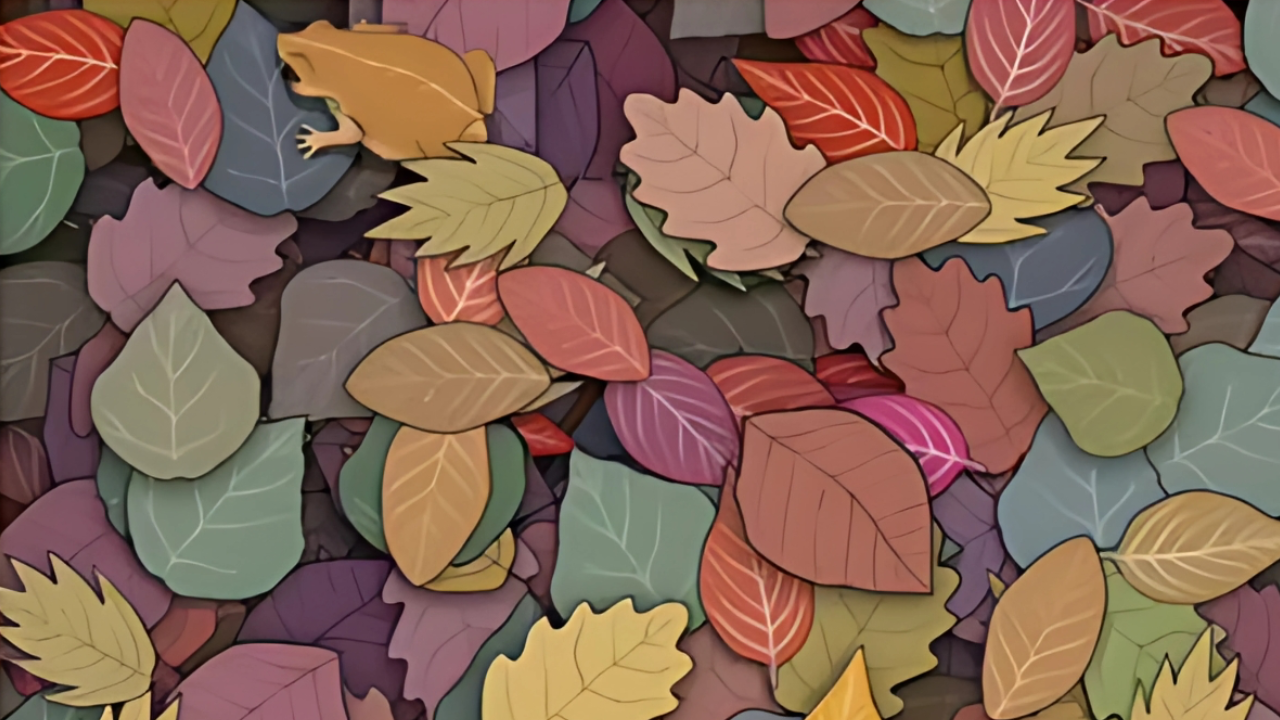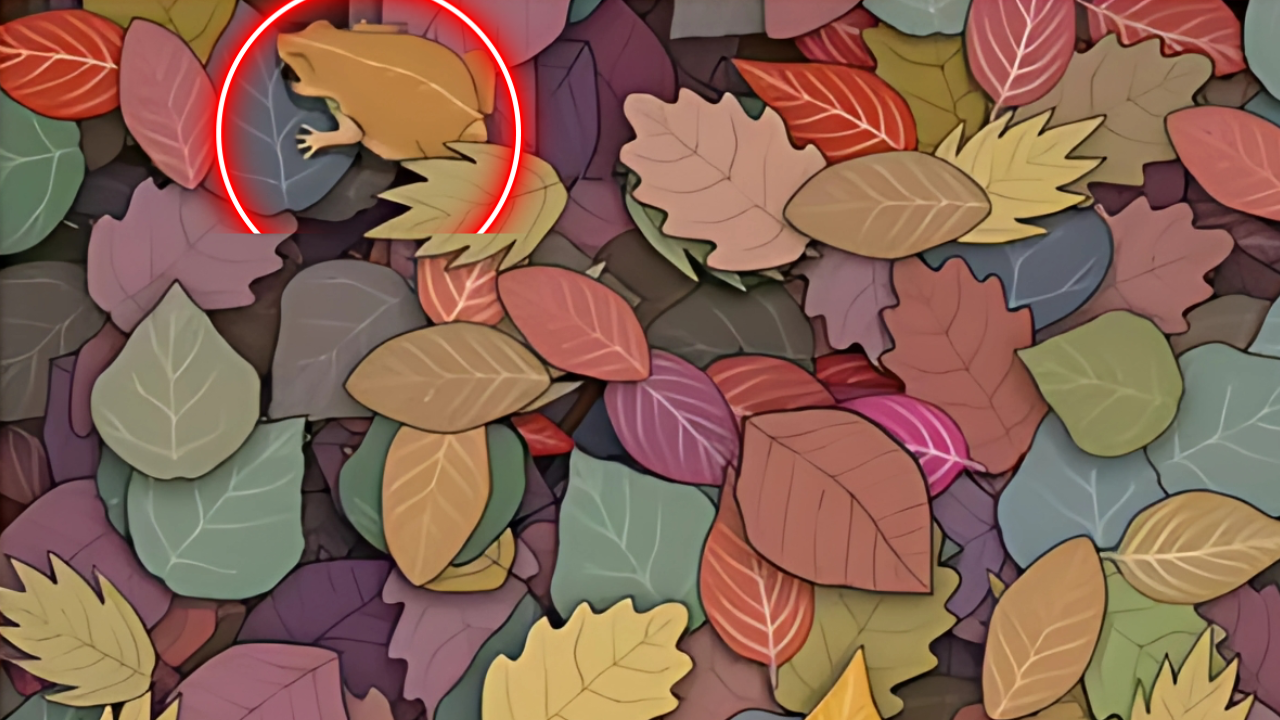Optical illusions have fascinated humanity for centuries, captivating our minds and challenging our perception of reality. These visual puzzles trick our brains into seeing something that isn’t there—or missing something that is. Among the most intriguing is the “Can You See the Frog?” optical illusion, a classic that continues to stump even the sharpest observers. In this 1500-word exploration, we’ll delve into the science behind optical illusions, unpack the frog illusion, and guide you through the challenge of spotting the elusive amphibian. Ready to test your visual prowess? Let’s dive in.
What Are Optical Illusions?
Optical illusions are images or patterns that deceive our visual system, causing us to perceive something different from reality. They exploit the way our brains process visual information, revealing the gaps between what our eyes see and how our minds interpret it. Illusions can arise from color contrasts, geometric arrangements, or clever manipulations of perspective.

The human brain is wired to make quick sense of the world, often filling in missing information or making assumptions based on patterns. Optical illusions take advantage of these shortcuts, creating confusion or surprise. For example, an image might appear to move when it’s static, or a single picture might contain two distinct images depending on how you look at it.
The “Can You See the Frog?” illusion is a perfect example of a figure-ground illusion, where the brain struggles to distinguish between the main subject (the figure) and the background. These illusions challenge our ability to focus on specific elements, making them both frustrating and fascinating.
The Science Behind Optical Illusions
To understand why optical illusions like the frog challenge work, we need to explore how our visual system operates. Vision begins when light enters our eyes, hitting the retina, which sends signals to the brain via the optic nerve. The brain then interprets these signals, but it doesn’t process every detail. Instead, it relies on heuristics—mental shortcuts—to make sense of complex scenes quickly.
One key principle at play in the frog illusion is figure-ground organization. Our brains naturally separate images into a foreground (the figure) and a background. In figure-ground illusions, the distinction between the two is ambiguous, causing the brain to flip between interpretations. For example, the famous Rubin’s vase illusion can be seen as either a goblet or two faces in profile, depending on what you focus on.
Another factor is gestalt principles, which describe how we group visual elements into meaningful patterns. The brain tends to look for continuity, symmetry, and closure, sometimes seeing shapes or objects that aren’t explicitly drawn. In the frog illusion, the image is designed to hide the frog by blending it into the background, exploiting these principles to make the figure hard to discern.
Contrast and color also play a role. High-contrast patterns can create visual noise, making it harder to isolate the subject. The frog illusion often uses similar colors or textures for both the frog and the background, forcing the brain to work harder to separate them.
The “Can You See the Frog?” Illusion Explained
The “Can You See the Frog?” illusion is a classic figure-ground puzzle that challenges viewers to find a hidden frog within a seemingly chaotic or abstract image. Typically, the image features a mix of leaves, branches, or water-like patterns, with the frog camouflaged among them. The frog’s shape is cleverly integrated into the scene, using similar colors and textures to blend it seamlessly with the background.
At first glance, the image might look like a random pattern or a natural scene, such as a pond with lily pads. The challenge lies in shifting your perception to recognize the frog’s outline. Once you see it, the frog often becomes impossible to unsee—but getting to that point can take time and effort.
This illusion is particularly effective because it mimics real-world camouflage. Frogs in nature often blend into their surroundings to avoid predators, using patterns and colors that disrupt their outlines. The illusion replicates this by making the frog’s shape ambiguous, forcing your brain to search for familiar patterns, like the frog’s legs, eyes, or body.
How to Spot the Frog: Tips and Tricks
If you’re struggling to find the frog, don’t worry—you’re not alone. Here are some strategies to help you crack the illusion:
-
Change Your Perspective: Step back from the image or tilt your head. Sometimes, a slight shift in angle helps the frog’s shape pop out.
-
Focus on Negative Space: Instead of looking for the frog directly, focus on the spaces between shapes. The frog might be defined by the gaps or outlines rather than a solid form.
-
Look for Key Features: Frogs have distinct features like large eyes, long legs, or a rounded body. Scan the image for these shapes.
-
Adjust Contrast: If you’re viewing the illusion on a screen, try adjusting the brightness or contrast to make the frog stand out.
-
Take a Break: Staring too long can cause visual fatigue. Look away for a moment, then return with fresh eyes.
-
Trace the Outline: If you’re still stuck, try tracing the image with your finger or a pen to follow potential shapes that form the frog.
These tips can help, but the real key is patience. The frog is there, waiting to be discovered, and the satisfaction of finding it is worth the effort.
Why Do Some People See It Faster?
Not everyone finds the frog at the same speed. Some spot it instantly, while others stare for minutes without success. This variation comes down to differences in visual processing and cognitive styles.
-
Visual Acuity: People with sharp vision or experience in spotting patterns (like artists or puzzle enthusiasts) may find the frog faster.
-
Attention to Detail: Detail-oriented individuals might notice subtle cues, like a slight color difference or an unusual shape, that reveal the frog.
-
Experience with Illusions: If you’ve tackled similar illusions before, your brain may be better trained to switch between figure and ground.
-
Cognitive Flexibility: Some people naturally shift between different interpretations of an image, making it easier to see the hidden figure.
Interestingly, mood and environment can also affect your success. Stress or distractions can make it harder to focus, while a relaxed state might help the frog emerge.
The Psychology of Optical Illusions
Optical illusions like the frog challenge do more than entertain—they reveal how our minds work. They show that perception is not a passive process but an active one, shaped by expectations, experience, and context. When you finally see the frog, it’s not just your eyes at work; it’s your brain making sense of ambiguous information.
Illusions also highlight the brain’s limitations. Our visual system evolved to prioritize survival, not to solve puzzles. In the wild, spotting a camouflaged predator or prey was crucial, but our brains aren’t perfect at it. The frog illusion taps into this evolutionary trait, making us question our perception and marvel at its complexity.
Moreover, illusions can evoke strong emotions. The frustration of not seeing the frog can turn into delight when you finally spot it. This emotional rollercoaster is part of what makes optical illusions so engaging.
Other Famous Optical Illusions
The frog illusion is just one of many visual puzzles that challenge our perception. Here are a few others worth exploring:
-
The Rubin Vase: As mentioned earlier, this illusion alternates between a goblet and two faces in profile.
-
The Necker Cube: A simple line drawing of a cube that can be seen in two different 3D orientations.
-
The Spinning Dancer: A silhouette that appears to spin clockwise or counterclockwise, depending on how you view it.
-
The Hidden Tiger: Similar to the frog illusion, this image hides a tiger among jungle foliage.
Each of these illusions plays with different aspects of perception, from depth and motion to figure-ground organization.
Why Optical Illusions Matter
Beyond their entertainment value, optical illusions have practical applications. They’re used in psychology to study perception, in art to create striking visuals, and even in technology to improve image recognition systems. For example, understanding how humans process illusions can help design better AI algorithms for computer vision.
Illusions also remind us that our perception of reality is subjective. What one person sees instantly, another might never notice. This insight extends beyond visuals to how we interpret the world, from opinions to beliefs.

Challenge Yourself: Can You See the Frog?
Now that you know the science and strategies behind the “Can You See the Frog?” illusion, it’s time to put your skills to the test. Find a version of the illusion online or in a puzzle book, and give it a try. Don’t get discouraged if it takes time—the thrill of discovery is part of the fun.
Once you’ve found the frog, try sharing the illusion with friends or family. It’s fascinating to see how different people approach the challenge and how long it takes them to spot the hidden amphibian. You might even discover new ways to see the image yourself.
Looking Forward
Optical illusions like “Can You See the Frog?” are more than just visual tricks—they’re windows into the workings of our minds. By challenging our perception, they reveal the complexity of how we see and interpret the world. The frog illusion, with its clever camouflage and figure-ground ambiguity, is a perfect example of this phenomenon. Whether you spot the frog in seconds or struggle for minutes, the journey is a testament to the brain’s remarkable, yet imperfect, ability to make sense of the world.
So, can you see the frog? Take on the challenge, and let your brain unravel the mystery. You might be surprised at what you discover—not just about the illusion, but about yourself.
